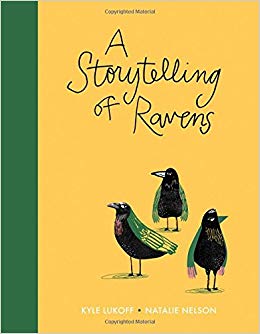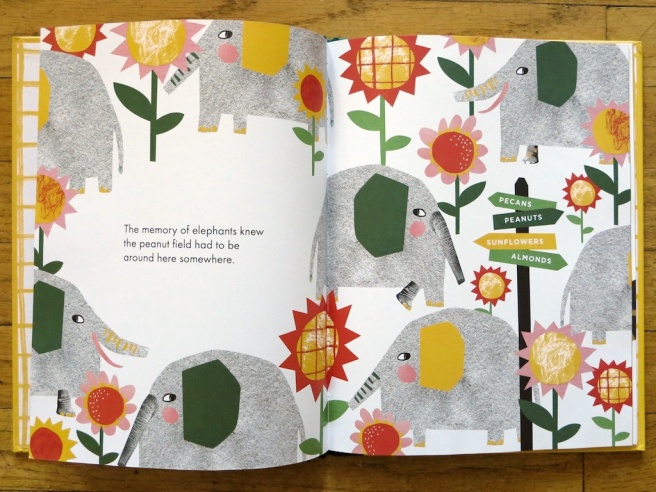It’s almost Halloween, and that means it’s time for what? (pause) Okay, like ghosts, or skeletons, or witches, right?
There are a huge range of books about witches, wizards, and magic. The books are really different from one another, too. There are books about wizards and witches that are very serious, and have lots of brooding people and battles and death–like The Dark Is Rising, I Am Morgan Le Fey, The Chronicles of Narnia, the Young Merlin trilogy, or some of the later Harry Potter books. And then there are silly books and movies about wizards and witches, like Wizards of Waverly Place, Halloweentown, Which Witch? or The Worst Witch, where magic is still powerful, but the characters are funnier, and the plot has more to do with resolving conflicts between people and preventing wacky hijinks. Even if you just limit yourself to books about child witches and wizards, there’s a lot to sort through.
I’m here today to talk about two books about young magicians which I really like. They have some things in common. Both books take place in alternate dimensions, and involve travelling between worlds. Both involve a hero who has a lot of magical potential and who has the chance to come into a great deal of power. And both books mix silly hijinks–like using magic to smuggle a Goddess in another world funny books about schoolchildren, or diving into a swimming pool of chocolate pudding–with more serious subjects. Both books talk about the abuse of power, the importance of empathy and understanding, and the need for justice.
The Lives of Christopher Chant by Diana Wynne Jones

Jones, Diana Wynne (1988). The Lives of Christopher Chant. New York, NY: Greenwillow Books.
ISBN: 0688163653.
230 pages.
This book, originally published in 1988, predated Harry Potter, and also came before other books about wizards in school, like Jane Yolen’s good book Wizard’s Hall. It centers on a young boy whose rich enchanter parents mostly ignore him. Even though magic is common in his world and his parents have magic powers, Christopher doesn’t seem to have any magical powers at all–except for in his dreams. When he goes to bed, he travels each night through a valley between the worlds, and can emerge in lands with dragons or mermaids. But then Christopher discovers that his dreams are real–and he can bring things back from the other dimensions. His uncle Ralph immediately puts him to work smuggling mysterious (sometimes smelly) packages from other dimensions in what he calls “experiments.” When one of these experiments goes wrong and Christopher ends up with a spear through his chest, he makes a truly amazing discovery–he has nine lives. As one of only two nine-lived enchanters, Christopher has the chance to become Chrestomanci–the overseer of all magic in his world and others. The only problem is, Christopher doesn’t want to be Chrestomanci at all. And even if he did–his uncle Ralph still depends on him for his own plans.
This isn’t a typical high fantasy story. It includes a high-spirited Goddess from another dimension who loves books about British school life, a ring of criminals who are illegaly smuggling mermaid body parts, a cat named Throgmorten who has magical powers, a hero who dies constantly without thinking anything about it, and a lot of really interesting ideas about worlds which branch off from one another at different points of history and sit side by side, connected with magic.
Christopher, unlike Harry Potter or other protagonists who start out morally perfect and innocent, doesn’t begin the book as a very nice person. Spoiled and neglected, he isn’t used to connecting to other people, and has a hard time understanding how to talk to adults or other children. At the same time, he loves deeply and is able to learn sympathy for others. He develops quickly as the story goes on into someone who is strong, loyal, and has a lot of capacity to act quickly to protect his friends and become a real leader. In Jones’ subsequent exciting Chrestomanci chronicles, we see Christopher as an adult magician with enormous power who helps manage magic across many dimensions and deal with new enemies.
Wizardmatch by Lauren Magaziner

Magaziner, Lauren (2018). Wizardmatch. New York, NY: Dial Books for Young Readers.
ISBN: 9780735227781 .
295 pages.
This new novel by Lauren Magaziner has some things in common with Eva Ibbotson’s Which Witch, J.K Rowling’s Harry Potter and the Goblet of Fire, and Wizards of Waverly Place. Essentially, it’s about wizard sports, friendship and family, betrayal, abuse of power, and forgiveness. The premise: super-powerful granddad wizard Pomporrompop (or something like that) , who lives in a castle made of food, is leaving all his powers and estate to the most powerful of his many, many grandchildren.
Here’s a passage:
Sparkles of light erupted in the entranceway, and at first Lennie could only see Poppop’s outline as he stood dramatically in the shadows. But then he pirouetted into the room and posed grandly, his staff held triumphantly in the air. Lennie stared at the long piece of wood with the rubber duck on top. It was amazing to think that one day she might get to hold the staff, and that it would amplify her powers, just like it did for Poppop. (Wizardmatch, p 52).
The protagonist, Lennie Mercado, is a 12 year old with invisibility powers who has grown up away from magic and who is determined to become the next great wizard in her family. She travels with her mom and brother into the wizard dimension in order to get a chance at inheriting her grandfather’s magic staff. But then her grandpa says he won’t let Lennie even compete! Lennie is pretty sure her grandpa is making this decision because she is a girl, and after overhearing her granddad talking to her mom, she thinks the fact she’s half-Filipinx might have something to do with it too.
Bitter and fuming, Lennie stalks into the woods to try and run away, and runs into her great-uncle, who has been harboring a similar grudge against her grandfather since he was defeated fifty years ago and lost the opportunity to gain all the magical powers he might have had. He promises to help Lennie become more powerful,, if she sabotages the competition.
This is a goofy book with pools of pudding, graveyards of goulash, and a cat named Fluffles who has a monocle. But it’s also original. It also effectively parodies all the wizard fiction out there that is dependent on a whimsical, powerful patriarch (like Dumbledore or Gandalf) who is always proven right in the end. In this book, none of the grown ups, and least of all the men, are in the right. It might be a silly little story, but I loved it, and am so excited to read more stuff in this vein.










